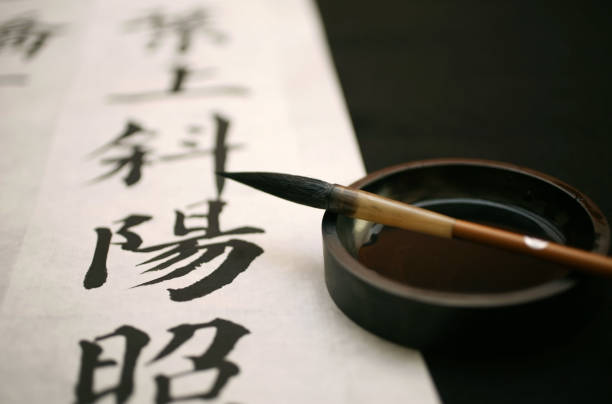
Chinese character calligraphy is a distinguished and revered art form that combines the beauty of writing with the expressiveness of visual art. It is more than just an aesthetic endeavor; it reflects the rich history, culture, and philosophy of China. Each character is a symbol rich with meaning, often embodying deep cultural significance and historical context.
The Essence of Chinese Characters
Chinese characters, or Hanzi, are logograms used in the writing of Chinese and some other East Asian languages. Unlike alphabetic scripts, each character represents a word or a meaningful part of a word. The complexity and beauty of these characters lend themselves well to artistic expression through calligraphy.
-
Simplicity and Complexity: Characters can range from simple forms, such as “一” (one) or “大” (big), to complex structures, such as “龙” (dragon) or “爱” (love). The variation in stroke count and structure allows for diverse artistic interpretations.
-
Cultural Significance: Many characters have historical roots that reflect philosophical concepts, natural elements, or societal values. For example, the character “福” (fu), meaning “blessing” or “good fortune,” is often used decoratively during festivals and celebrations.
Styles of Chinese Character Calligraphy
Chinese calligraphy encompasses a variety of styles, each with its own techniques and aesthetics. Some of the most notable styles include:
-
Regular Script (楷书): The most commonly used style, known for its clarity and structure, making it suitable for both educational and artistic purposes.
-
Running Script (行书): A fluid, semi-cursive style that allows for quicker writing while maintaining elegance. It is often favored for personal correspondence.
-
Cursive Script (草书): An expressive and free-flowing style, characterized by its artistic brushwork. While challenging to read, it emphasizes creativity and spontaneity.
-
Seal Script (篆书): An ancient style used primarily for inscriptions and seals. Its intricate designs are appreciated for their historical significance and beauty.
The Practice of Calligraphy
Practicing Chinese character calligraphy involves skillful techniques and a deep understanding of the art form. Key elements include:
-
Brushwork: Mastery of brush control is essential. Calligraphers use traditional brushes to create varying stroke thicknesses, emphasizing the character’s beauty.
-
Ink Preparation: The traditional method of grinding ink sticks on an ink stone allows for a rich, deep color that enhances the visual appeal of the characters.
-
Composition and Spacing: Understanding how to balance characters on the page is vital. Calligraphers pay careful attention to spacing, alignment, and the overall composition of the piece.
Cultural Impact and Significance
Chinese character calligraphy holds a significant place in Chinese culture, reflecting values such as:
-
Self-Expression: Calligraphy is seen as a way to express individuality and creativity. Each artist’s unique style contributes to the diversity of this art form.
-
Philosophical Reflection: The practice of calligraphy is often associated with philosophical teachings, encouraging practitioners to cultivate patience, focus, and inner peace.
-
Cultural Preservation: Calligraphy preserves the historical and cultural context of Chinese characters, serving as a bridge between past and present.
Conclusion: A Living Heritage
Chinese character calligraphy is a vibrant and dynamic art form that continues to inspire and captivate people around the world. Whether you are a seasoned artist or a curious beginner, exploring this art form offers a unique opportunity to connect with Chinese culture and history.
To delve deeper into this captivating world, visit [China Art Hub] and discover resources, tools, and inspiration for your journey into Chinese character calligraphy. Embrace the beauty and significance of each character as you embark on your creative path.





Leave a Reply